SAME SAME BUT DIFFERENT…
2023 – 24 ongoing
Installation
installation
SAME SAME BUT DIFFERENT…
Materialisierte Schattenspuren
Auslöschung, Spuren und Erinnerung
Der schweigende Wald der hängenden Polariods materialisiert die Schatten der zivilen Opfer des brutalen Angriffskriegs Russlands, oder seines autokratischen Herrschers, auf die Ukraine und zeichnet die Spuren seiner Verwüstung in den Raum.
Laut offiziellen Angaben und Statistiken zählen mit Januar 2024 die zivilen Todesopfer, seit dem Angriff am 24. Februar 2022, allein auf ukrainischer Seite, 10.191 – davon sind 573 Kinder.
Jedes einzelne „Polaroid“ das in den Gerüsten hängt oder unter den Betonblöcken der „Namenlosen“ gestapelt liegt, repräsentiert eine tote Person die in dieser ernsten Landschaft bedacht wird.
Die Installation in seiner kraftvollen Schlichtheit ist ein Mahnmal, das aber bei näherer Anschauung die mehrfachen Schichten existenzieller Wahrnehmung, die Vektoren und Schnittpunkte gedanklicher Vermessung, ermöglichen, die weit über das Mahnmal hinausweisen.
So ist die Installation eine Landschaft, wie eine Begriffs-Wolke oder Bild-Cloud die auch ein Medienobjekt ist und gleichzeitig Warnbake am Wegesrand des Zeitvektors, der in die Zukunft zeigt und den Schatten der unmittelbaren Vergangenheit mit denen der Geschichte und Zukunft, wie dem Glücklosen Engel auf die Wände und Objekte unserer Gegenwart wirft.
Die Polaroids – stellvertretend für Sofortbild – waren ab den 70er Jahren des letzten Jahrhunderts
Beliebtes Werkzeug und Symbol der beschleunigten Mediengesellschaft. Der chemisch materielle Vorläufer der Idee von Instagram und TikTok unserer digitalen Gegenwart, in der Bilder im Moment mit Millionen Menschen geteilt weitergegeben und kommentiert werden können. Und damit über soziale Netze verbundener Computer und Smartphones Wirklichkeiten abgebildet und auch neue geschaffen werden.
Polaroids sind aber Objekte und kein digitaler Code. Die von Kerstin Bennier in Handarbeit erzeugten „künstlichen Sofortbilder“, zeigen abstrakte Strukturen, unverwechselbare marmorierte Muster.
Wie das Verblassen der Polaroids – in dem diese Bilder in grauen, blauen und violetten Schlieren langsam verlöschen und immer weniger Kontur zeigen – verschwinden die Spuren der abgebildeten Menschen, wie Aufmerksamkeit und Wahrnehmung, in unserem schnelllebigen Medienzeitalter, so schnell verwehen wie Ereignisse hochkochen. So wird der Ukrainekrieg von anderen Kriegen und Gewalteskalationen wie so eben im Nahen Osten, dem Krieg in Gaza, überlagert.
Das persönliche Schicksal geht dabei, in den Fluten medialer Aufzeichnungen, millionenfach geteilter Selfies und Deepfake-Bilder, auch direkt aus dem Kriegsgeschehen, unter.
In diesem Kontext ist die Rauminstallation auch ein Manifest, ein aktives Ankämpfen gegen das Verschwinden in der digitalen Kommunikationswelt.
Krieg war immer schon auch ein mediales Ereignis, aber die Geschwindigkeit der Verarbeitung von Inhalten hat uns bereits überholt. Wir sehen Bilder von Soldaten und Opfern direkt vom Smartphone in die Wohnung geliefert. Bilder von Drohnen die ihren Zielanflug bis zur Detonation auf sozialen Medien mitverfolgen lassen und Gesprächsstoff für soziale Medienplattformen liefern.
Da diese Bilder in den Medien die Macht haben Meinung zu bilden, ist politisches Geschehen bis zu Konflikten und kriegerischen Handlungen mit der medialen Erzählung und medialen Dynamik verwoben.
Es soll hier auch vergegenwärtigt werden, das der Grossteil der Kriege und bewaffneten Auseinandersetzungen, davon über 20 ausgewiesene Kriegsereignisse, unterhalb des Radars der medialen Weltöffentlichkeit stattfinden. Und es ist zu befürchten, dass in der gegenwärtigen Weltlage in der die Sprache, populistischer werdender Politik, immer gewalttätiger wird und sich offen autokratisch und antidemokratisch positionierende Akteure regen Zulauf bekommen, weitere Gewaltereignisse hinzukommen werden.
Auch hier ist das Ankämpfen gegen die Auslöschung der Erinnerung von enormer Wichtigkeit. Nur so können wir lernen und angemessen reagieren.
Aber. Der Mensch lernt nicht aus der Geschichte. Eine Feststellung die vielen, von Hegel bis Gandhi, nachgesagt wird und wahrscheinlich so alt ist wie die Geschichte selbst.
„Same, same but different …“
ist eine Wortwendung die ursprünglich aus Thailand kommt. Als Direktübersetzung ins Englische, das als sogenanntes „Thinglish“ wahrscheinlich aus der Zeit des Vietnamkrieges (1955-1975) stammt, als sich amerikanischen Soldaten in Südost-Asien aufhielten und viele englisch lernten um rudimentär kommunizieren zu können. So verweist der Name der Installation auch neben der sich selbsterklärenden Redewendung auf einen anderen Krieg in der langen Reihe geopolitischer Kriegsführung.
Ein zerstörerischer Prozess der sich zum Cyber- und Drohnen-Krieg gewandelt, in der Einflusssphäre kybernetischer Steuersysteme, das was wir als Zivilisation bezeichnen und die Infrastrukturen für menschliches Überleben korrodierend angreift und zu destabilisieren sucht.
Mit der Installation kann auch gefragt werden ob wir hier schon die Schatten der Opfer eines untergehenden Herrschaftssystems, einer Weltordnung oder vielleicht sogar einer Zivilisation sehen.
Ist diese unerträgliche Wiederholung der Geschichte, toxischer patriarchaler Gewaltherrschaftsansprüche, die wie die Polaroids aus der Zeit gefallen erscheint, ein Rückfall zu den unauflösbaren Mustern oder ein letztes Aufbäumen einer Epoche die enden wird?
Es lassen sich die Spuren und Muster des Zerfalls und Vergehens auch gleichzeitig als die Schlieren der Entwicklungsemulsion im Prozess der Herausarbeitung des Instantbildes sehen. Die sichtbaren Mäander des Entwicklungsprozesses das ein Bild der noch gesichtslosen Zukunft hervorbringt.
Die zu kommende Zeit ist, auch wenn sie für Viele verloren scheint, noch nicht definiert. Uns die wir davorstehen und unserer Imaginationskraft, ist ein Fragment in diesem Werdungsprozess zuteil und so sind diese Schlieren auch ein nebelhaftes Bild das in unserer Hand liegt, zu sehen wie es sich entwickelt und zu definieren was es zeigen wird, wenn es Schärfe gewinnt.
Thomas J. Jelinek / 2024
SAME SAME BUT DIFFERENT…
Materialised Shadow Traces
Erasure, traces and memory
The silent forest of hanging polariods materialises the shadows of the civilian victims of the brutal invasion of Ukraine by Russia, or its autocratic ruler, and outlines the traces of its devastation in space.
According to official figures and statistics, as of January 2024, the civilian death toll since the attack on 24 February 2022, is numbered by 10.191 on the Ukrainian side alone – 573 of them children.
Every single „Polaroid“ hanging in the scaffolding or stacked under the concrete blocks of the „nameless“ represents a dead person who is being considered in this serious landscape.
The installation in its powerful simplicity is a memorial, but on closer inspection it reveals the multiple layers of existential perception, the vectors and intersections of mental measurement that point far beyond the memorial.
Thus the installation is a landscape, like a conceptual cloud or image cloud that makes it also to a media object and a warning beacon on the edge of the time vector that points to the future and casts the shadow of the immediate and distant past as well as that of the future, like the luckless angel on the walls and objects of our present.
From the 1970s of the last century, Polaroids – representing instant photography – were a popular tool and symbol of the accelerated media society. The chemical material predecessor of the idea of Instagram and TikTok of our digital present, in which images can be shared and commented on with millions of people in an instant. And thus realities are depicted and new ones created via social networks of connected computers and smartphones.
However, Polaroids are objects and not digital code. The „artificial instant images“ created by Kerstin Bennier by hand, show abstract structures and unmistakable marbled patterns.
Like the fading of the Polaroids – in which these images slowly fade in gray, blue and purple streaks and show less and less outline – the traces of the people depicted disappear, like attention and perception,
in our fast-moving media age, disappear as quickly as events boil up. The war in Ukraine is overshadowed by other wars and escalations of violence, such as the war in Gaza in the Middle East.
The personal fate is lost in the flood of media recordings, millions of shared selfies and deepfake images, including such as directly from the war.
In this context, the installation is also a manifesto, an active stand against disappearance in the world of digital communication.
War has always been a medial event, but the speed of processing content has already outpaced us. We see images of soldiers and victims delivered directly from smartphones to our homes
Images of drones that can be followed on social media from their approach to detonation and provide topics of conversation for social media platforms.
As these images in the media have the power to shape opinion, political events, including conflicts and acts of war, are closely interwoven with the media narrative and the dynamics of the media.
It should also be recognized at this point, that the majority of wars and armed conflicts, including over 20 reported war events in our present, take place below the radar of the global media.
And it is to be feared that in the current world situation, in which the language of populist politics is becoming increasingly violent, while openly autocratic and anti-democratic actors are gaining popularity, further violent events will occur.
Here too, fighting against the erasure of memory is of enormous importance. This is the only way we can learn and react appropriately.
But. People fail to learn from history. A statement that is attributed to many, from Hegel to Gandhi, and is probably as old as history itself.
„ Same, same but different …“
is a phrase that originally comes from Thailand. As a direct translation into English, the so-called „Thinglish“ probably originates from the time of the Vietnam War (1955-1975), when American soldiers were based in South East Asia and many learnt English in order to be able to communicate in a rudimentary way. The name of the installation thus refers not only to the self-explanatory phrase but also to another war in the long series of geopolitical warfare.
A destructive process that has morphed into cyber and drone warfare, in the sphere of influence of cybernetic control systems, corroding and destabilising what we call civilisation, attacking the infrastructures for human survival.
The installation can also be taken as an opportunity to ask whether we are already seeing the shadows of the victims of a declining system of rule, a world order or perhaps even a civilisation.
Is this unbearable repetition of history, of toxic patriarchal claims to power that seem to have fallen out of time like the Polaroids, a relapse to the undissolvable patterns or a last gasp of an epoch that will end? The traces and patterns of dissolution and decay can also be seen as the streaks of the development emulsion in the process of forming the instant image. The visible meanderings of the development process that produces an image of the still faceless future.
The time to come, even if it seems lost to many, is not yet defined. We, who stand before it and our power of imagination, are granted a fragment in this process of becoming and so these streaks are also a nebulous image that lies in our hands, to see how it develops and to define what it will show when it gains clarity.
Thomas J. Jelinek / 2024













pictures: © Rudolf Strobl | Ausstellungsansicht – exhibition view: 100 Jahre Traklhaus, 2024

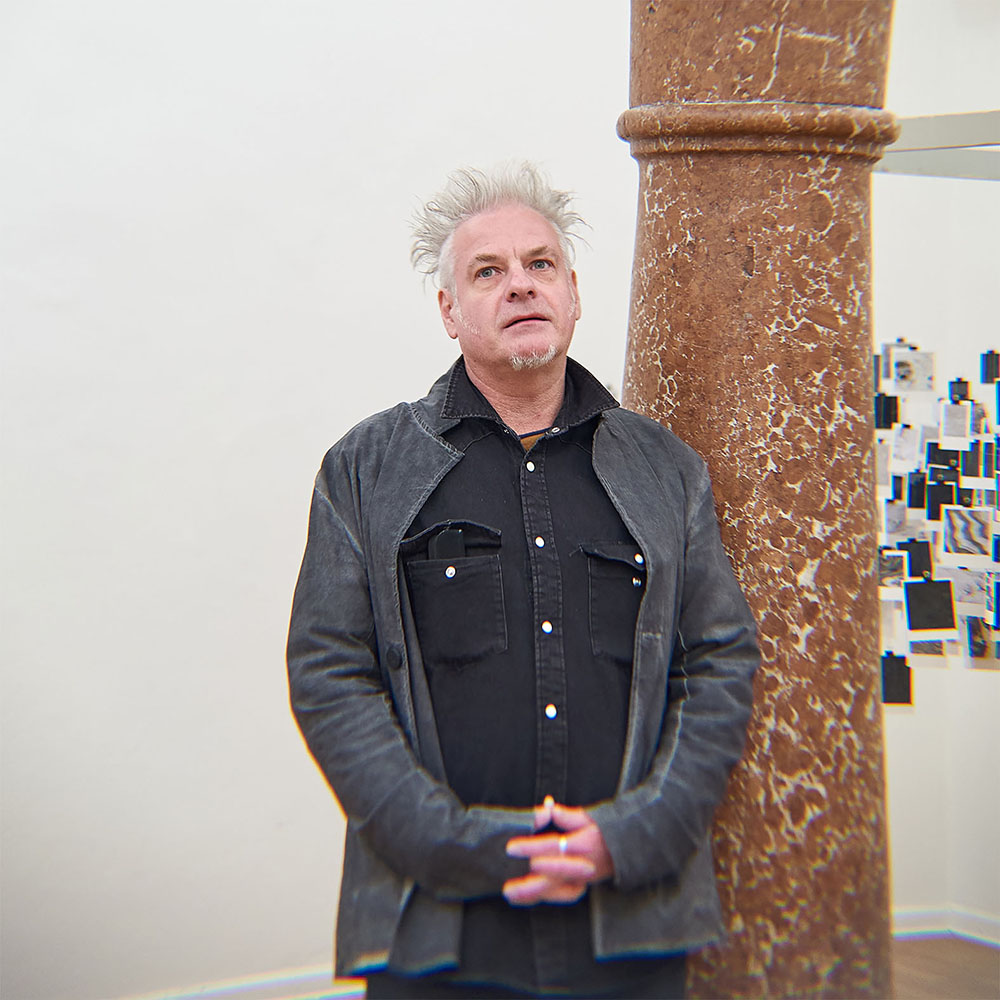
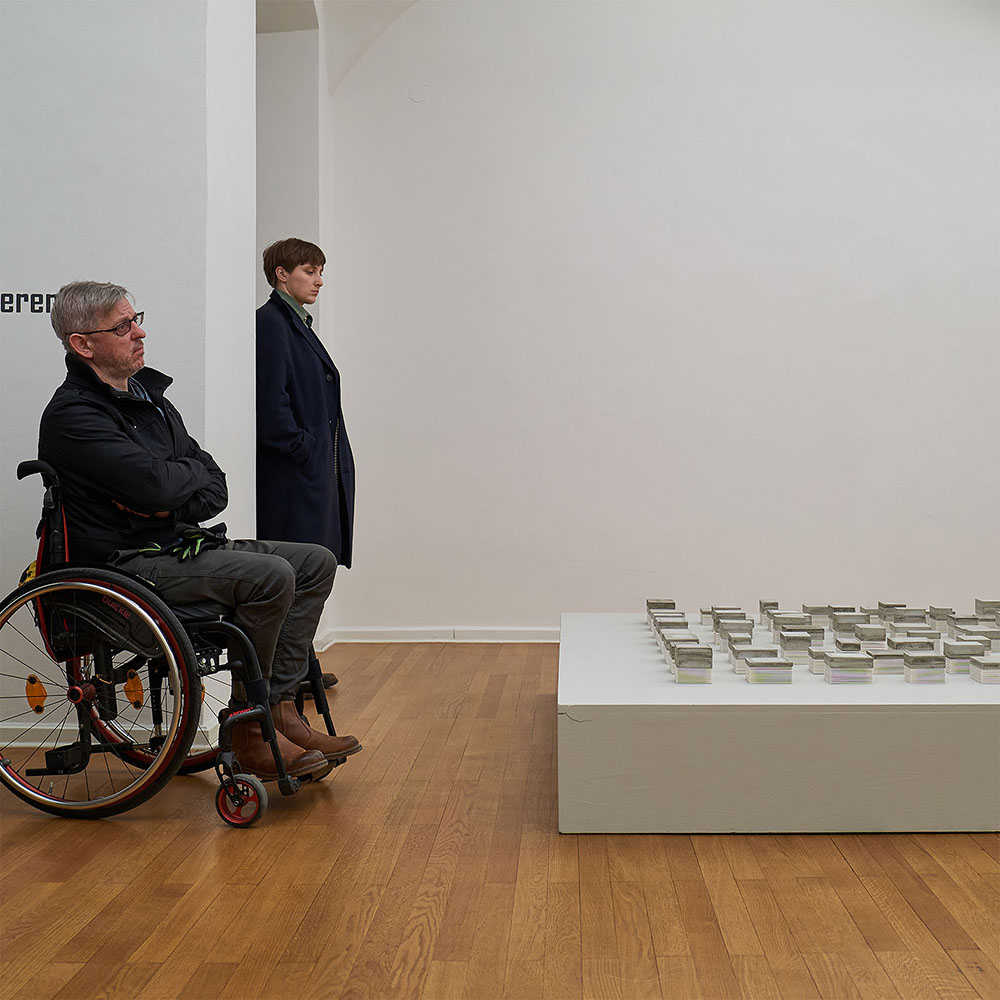
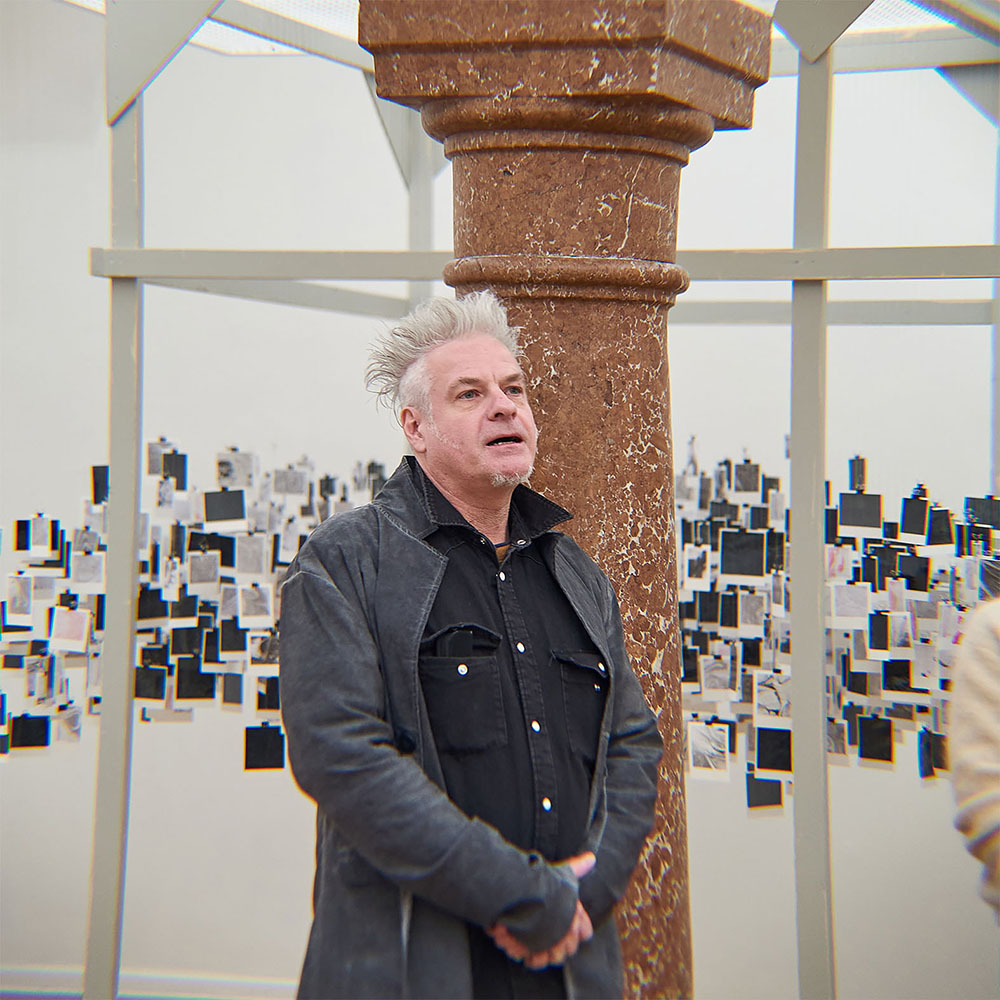
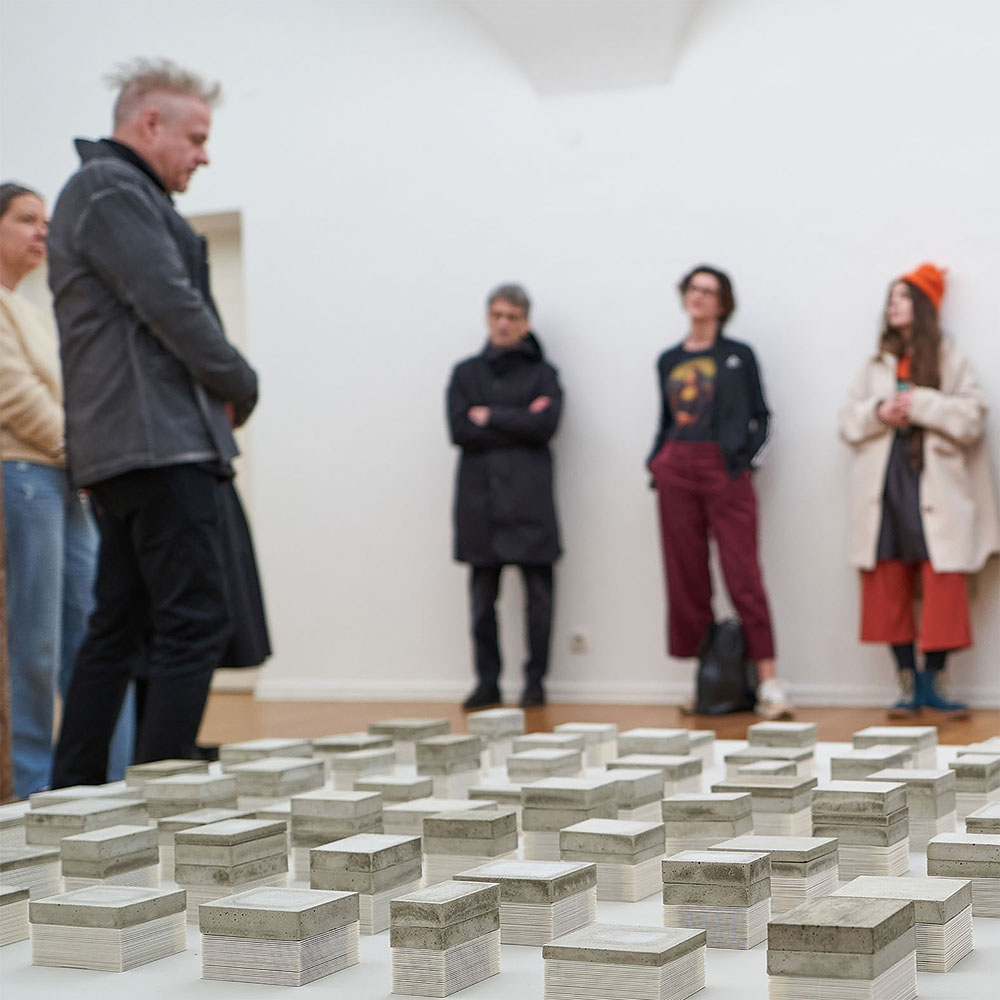
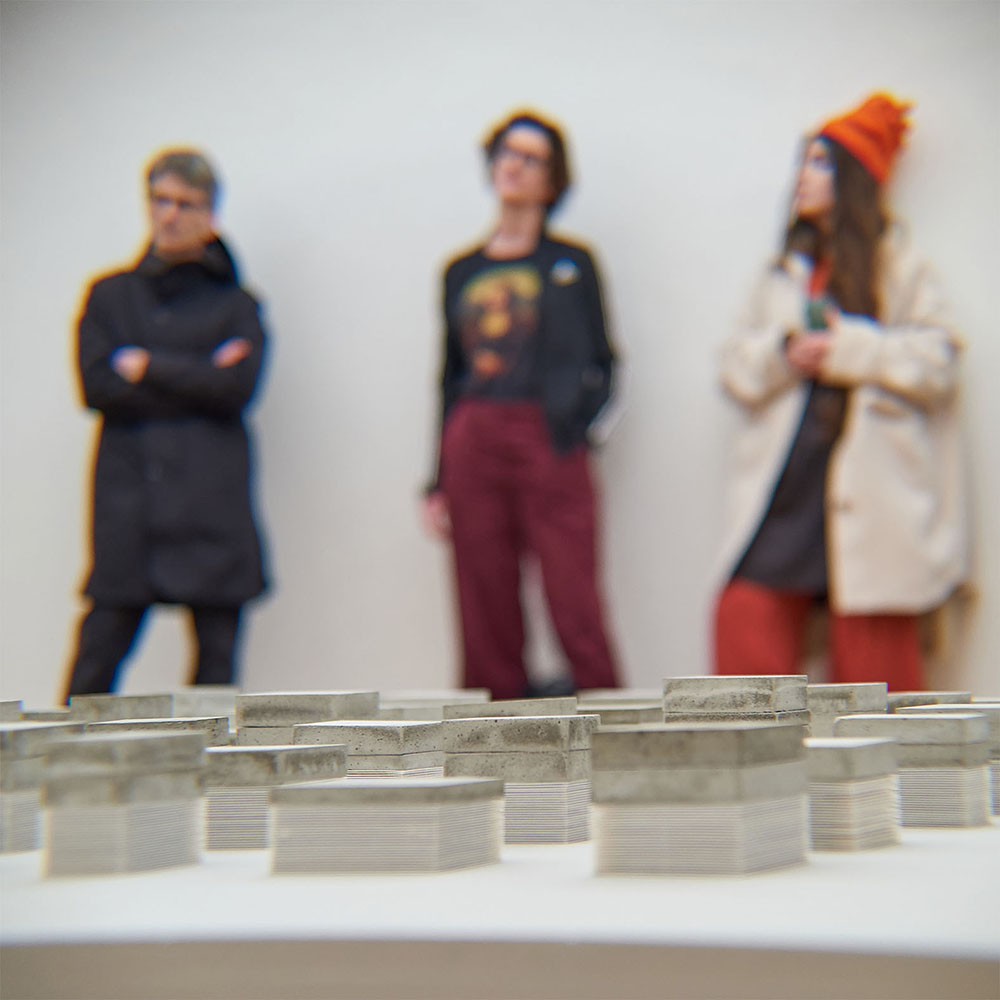

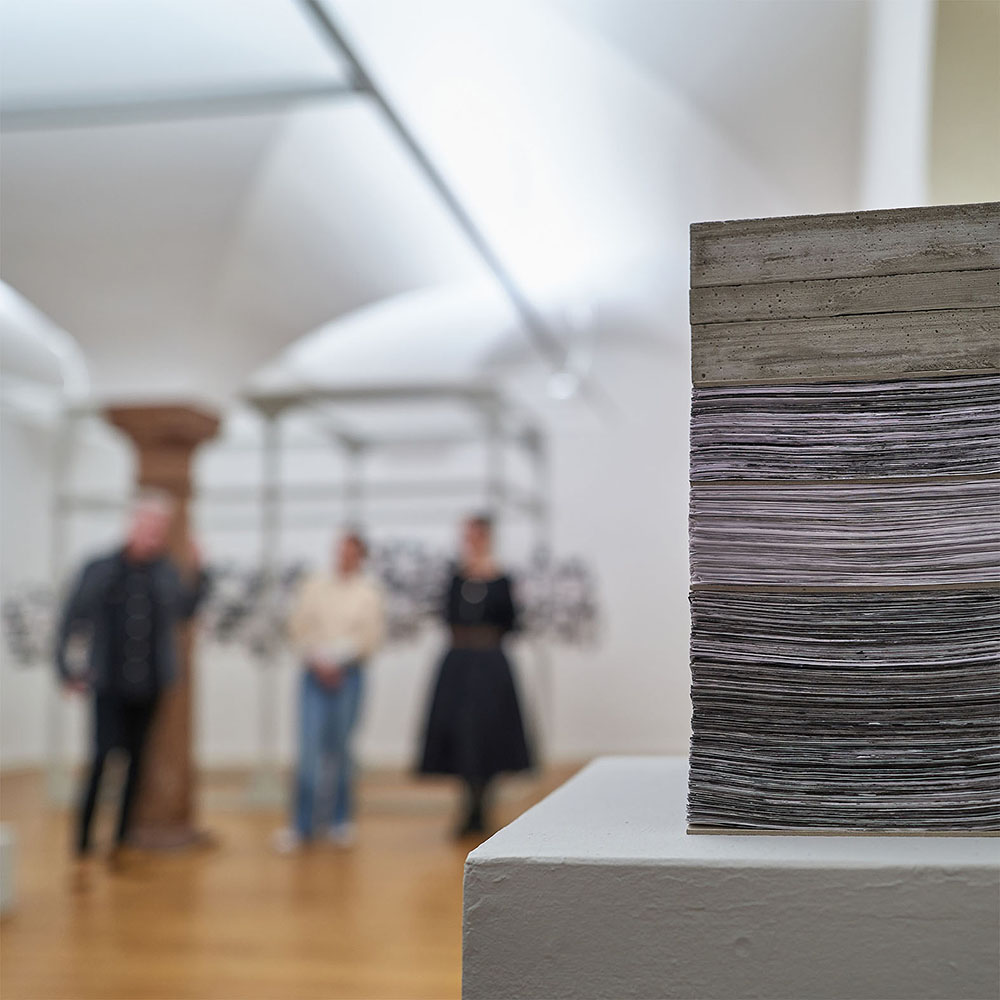
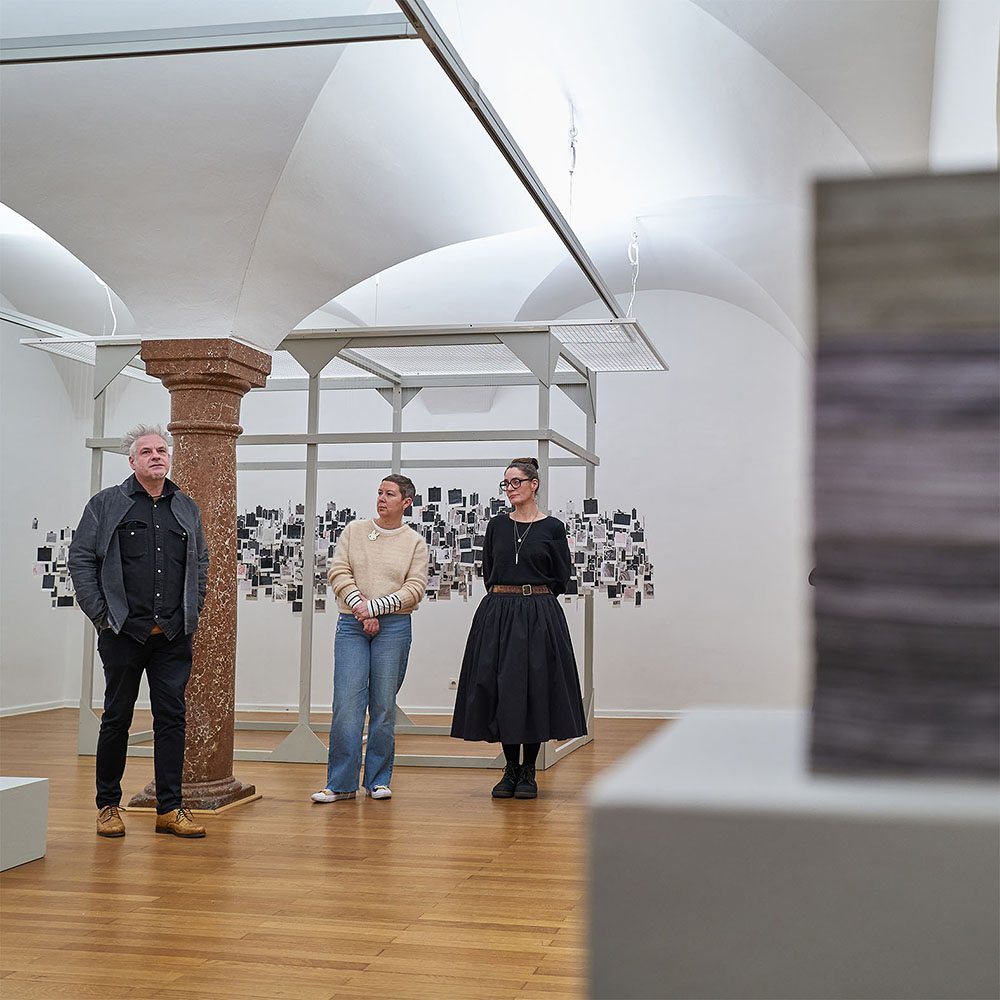
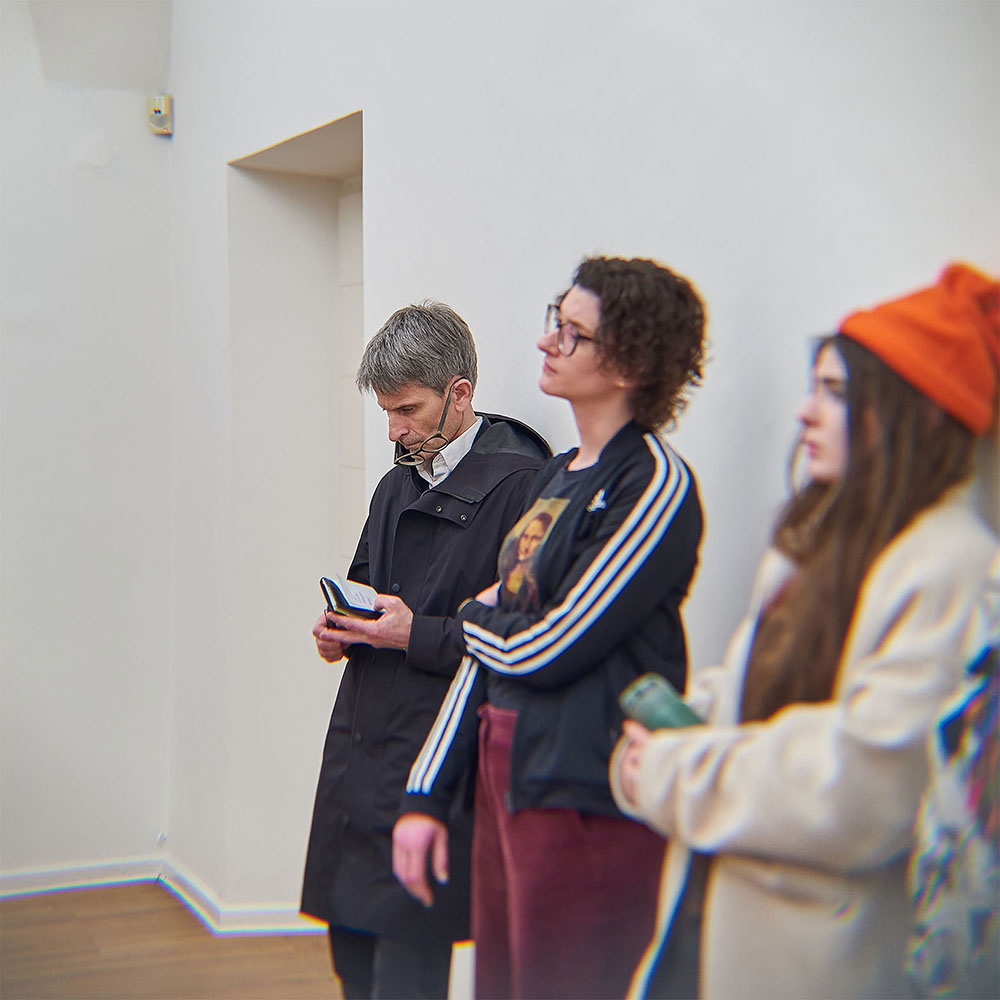
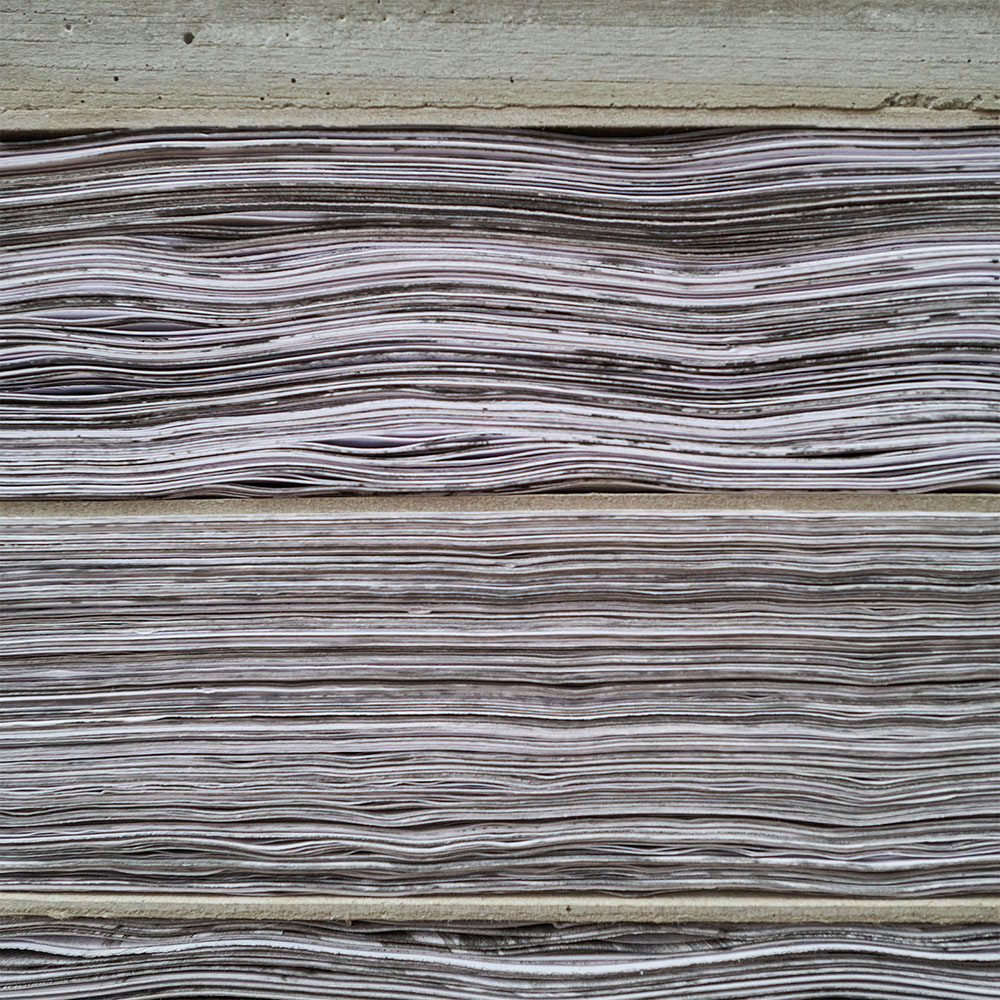

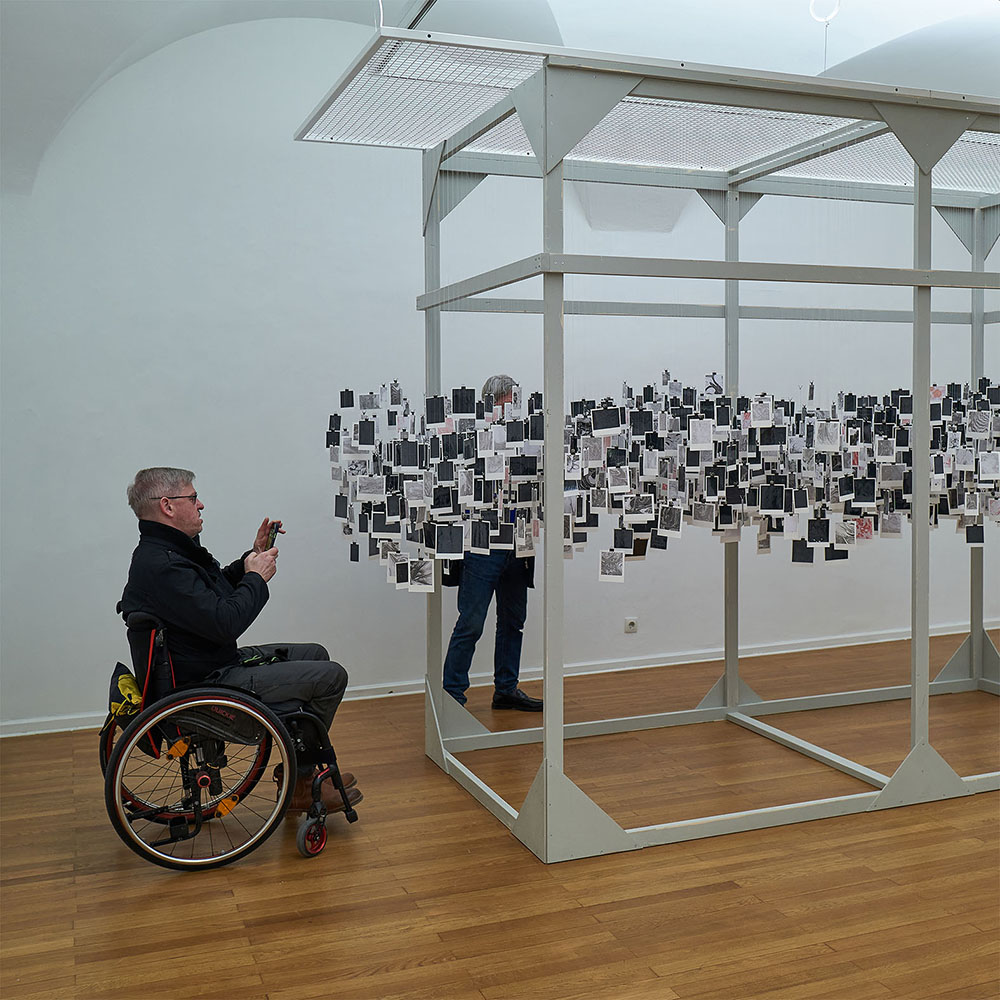
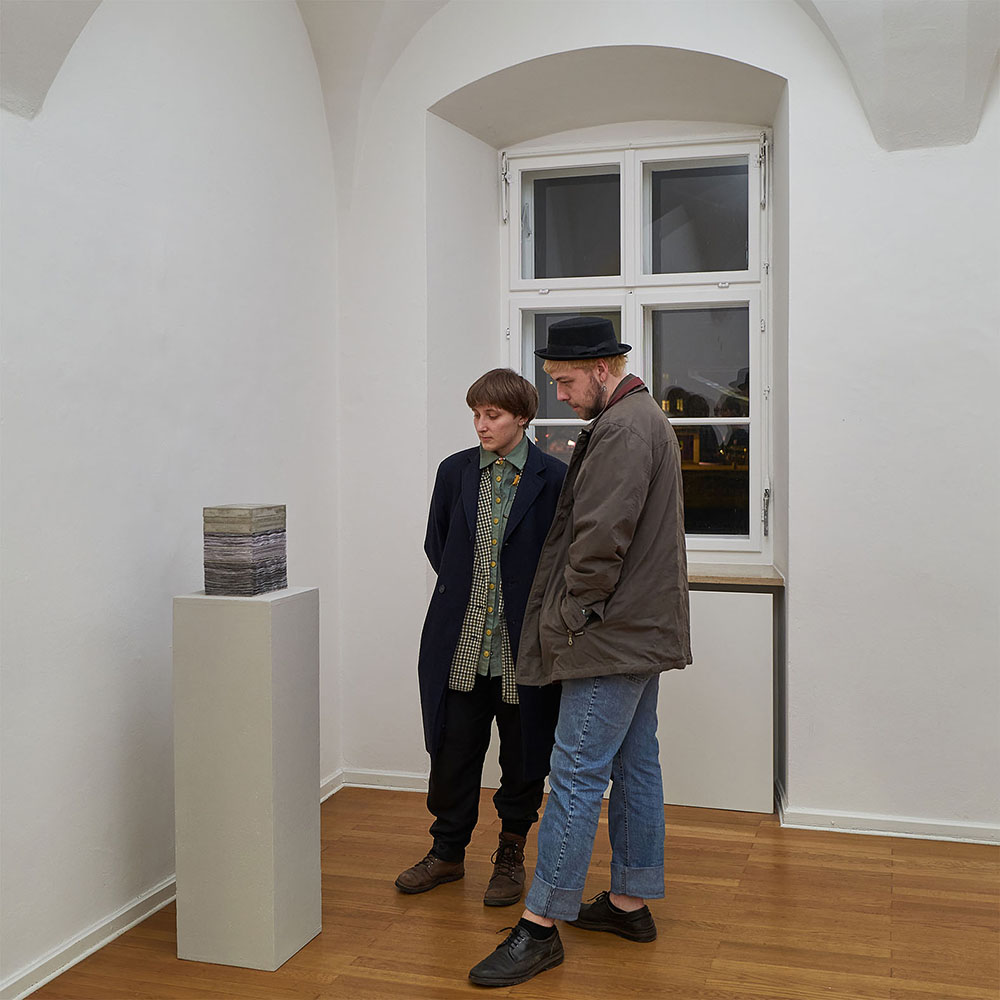
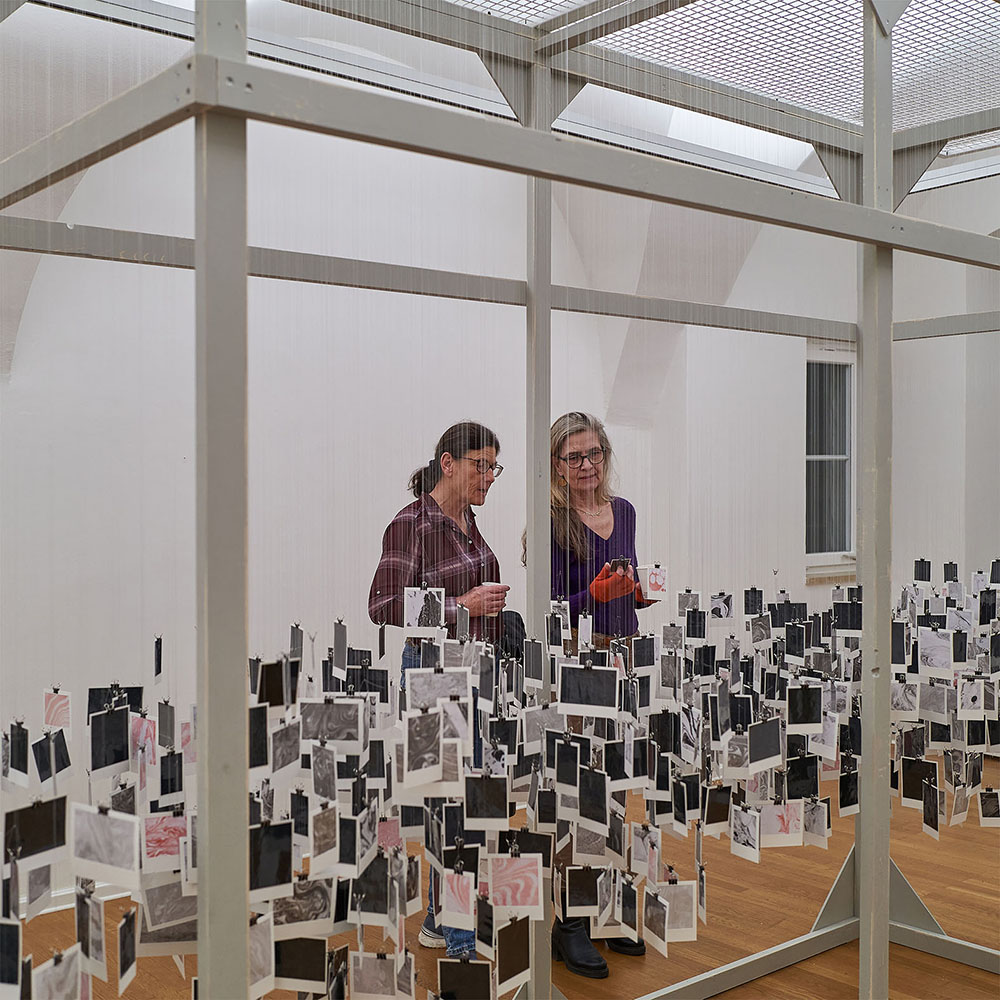



pictures: © Verena Tscherner | Vernissage Traklhaus, 2024